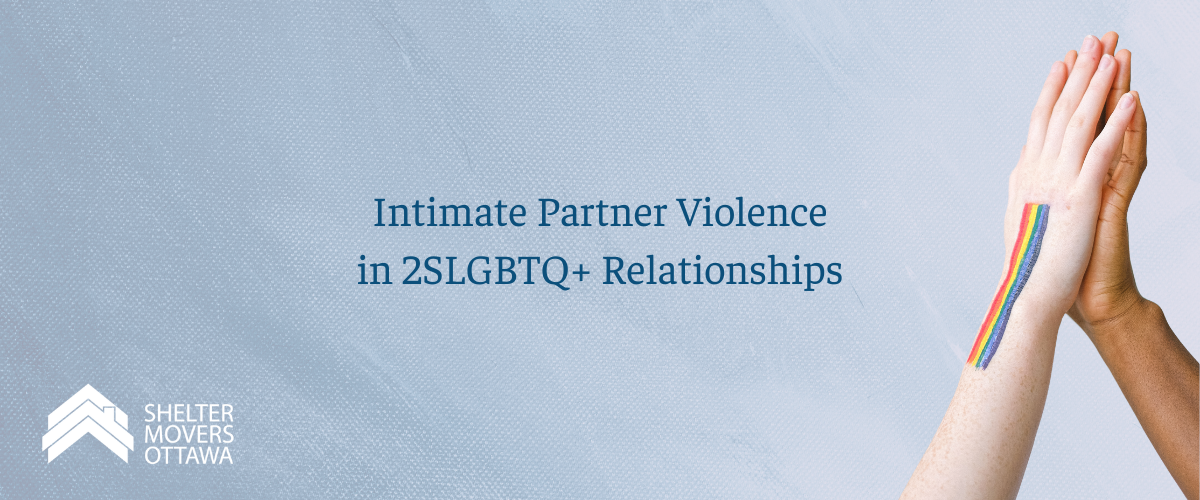TW/Disclaimer: This article contains descriptions of domestic violence
June is Pride Month in Canada, an opportunity to highlight issues specifically pertaining to people in the 2SLGBTQ+ communities. In this article, we examine how stereotypes surrounding domestic and sexual violence shape how society approaches and understands intimate partner violence in 2SLGBTQ+ relationships.
What is Intimate Partner Violence?
Intimate partner violence or domestic violence is a pattern of behaviour perpetrated by an intimate partner or ex-partner that causes physical, sexual, or psychological harm. This behaviour can include physical aggression, sexual coercion, psychological abuse and exerting control. Typically, discussions regarding intimate partner violence or domestic violence centre around a male perpetrator and a female victim. According to data from Statistics Canada (StatCan), in 2018, women were overrepresented as victims of intimate partner violence and account for approximately 8 in 10 victims (about 79%). Although women are disproportionately affected by intimate partner violence, conversations surrounding domestic violence often fail to take into account those in same-sex relationships.
Intimate partner violence is a significant problem. In fact, a 2020 survey from the University of Guelph found that domestic violence is similarly prevalent in same-sex and heterosexual relationships. Moreover, a 2018 StatCan report on intimate partner violence found that rates of intimate partner violence are higher among Indigenous women, 2SLGBTQ+ women, 2SLGBTQ+ men, women with disabilities, and young women. This indicates that literature about domestic violence needs to be revamped or expanded upon to include the experiences of those within the 2SLGBTQ+ communities.
An important element to consider about the prevalence of same-sex or heterosexual intimate partner violence is that the statistics often do not represent the reality of the situation. The numbers are often an under-representation of intimate partner violence due to individuals not reporting it or pursuing legal action. For example, a 2019 report on police-reported violence among same-sex intimate partners in Canada found that between 2009 and 2017, there were approximately 22,323 incidents of same-sex intimate partner violence, which represents 3% of all police-reported intimate partner violence incidents. The actual number of same-sex intimate partner violence incidents is likely higher because these statistics are based on those who seek help from the police.
Additionally, the same 2019 report stated that those who do report might be reluctant to share the true intimate nature of their relationship with their abuser with the police. This reluctance to report the true nature of the relationship may be due to fear of hostility or a belief that police may not take the crime seriously. As a result, it is likely that the numbers above are an under-estimation of intimate partner violence rates among the 2SLGBTQ+ community. There is also a lack of research pertaining to transgender and gender-non-conforming people, although it is well understood that this particular group is especially vulnerable to violence in general, and intimate partner violence in particular.
The Heteronormative Narrative
As mentioned previously in this article, there is an existing narrative about domestic violence that defines most of how we understand violence in relationships. According to a 2019 study of 13 sexual assault workers and 16 2SLGBTQ+ community workers in Victoria and South Australia, sexual violence is characterized by cisgendered [a person whose sense of personal identity and gender corresponds with their birth sex] males perpetrating violence against cisgendered women. In general, sexual violence is understood as involving penetration and happens because victims are physically overwhelmed or overpowered, which assumes the existence of a power dynamic that is tied to traditional gender roles: the man is the aggressor and the woman is the passive victim. However, this traditional power dynamic doesn’t apply to those who identify outside of the man/woman binary or who are in same-sex relationships. The heteronormative framing of sexual violence may make it difficult to identify anything that doesn’t fit that norm as sexual violence. Although this article mostly focuses on sexual violence, this heteronormative narrative applies to a broader understanding of intimate partner violence in same-sex relationships. Additionally, it may make it harder for those in same-sex relationships to identify the abuse they are experiencing as abuse and responding police might be more likely to confuse the victim with the perpetrator.
Heteronormative narratives also have an impact on men who are survivors of intimate partner violence in heterosexual relationships. This framework doesn’t account for their experiences and plays a huge role in why men do not report abuse as often as women do. In order to work towards preventing any and all forms of domestic violence, it is important to ensure that we, as a society, move away from heteronormative frameworks and focus on why instances of abuse are happening in the first place, regardless of one’s gender or sexuality. While recognizing patterns in intimate partner violence is important, it is vital to acknowledge that patterns do not represent the whole picture.

